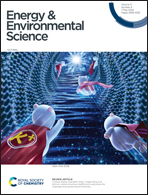Intrinsic carbon structure modification overcomes the challenge of potassium bond chemistry
Abstract
The development of advanced anode materials to overcome the slow kinetic processes and severe volume expansion of potassium ion batteries (PIBs) is critical for their further application in large-scale energy storage. Carbon materials, with their low cost, superior electroconductibility, modifiability and flexibility, store potassium by the formation of potassium bonds through the process of K+ adsorption on their surfaces or insertion into their interlayers. Due to the large radius of K+ with slow reaction kinetics and poor cycling stability, it is difficult for carbon anodes to exhibit superior comprehensive potassium properties without modification. Therefore, the intrinsic structure modification of carbon materials to change the state of the potassium bond via heteroatom doping engineering has been widely applied. This modification can regulate the electronic structure and interface state by increasing active sites, increasing K+ adsorption energy, accelerating electron migration and K+ diffusion as well as accommodating the volume effect to improve potassium storage performance. This review not only summarizes the latest advancements of single/double/triple heteroatom-doping carbon materials in tunable design, controllable synthesis and electrochemical performance elevation, but also attempts to decipher the underlying potassium storage mechanism from the perspective of the potassium bond. Finally, critical issues, challenges, and perspectives are discussed to propose the future direction of heteroatom-doped carbon materials for state-of-the-art PIBs.

- This article is part of the themed collection: Energy & Environmental Science Recent HOT Articles


 Please wait while we load your content...
Please wait while we load your content...